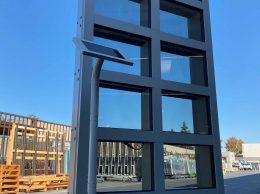Editorial: To win green jobs, foster innovation
How can the United States compete in a game that’s rigged? That is the question facing the solar energy manufacturing industry in this country. The problem is subsidies. Not ours, though. China’s.
In its most recent five-year economic plan, China poured massive subsidies into supporting the manufacture and export of components for solar energy panels. In the short run, the subsidies have given the Chinese a lot of momentum.
As U.S. Sen. Ron Wyden, D-Ore., pointed out during a recent visit to SolarWorld, the Hillsboro panel maker that recently shuttered manufacturing at its Camarillo facility, U.S. imports of solar panel components from China exploded by 1,500 percent between 2006 and 2010, growing to nearly $1.2 billion.
China’s rise in solar manufacturing comes at time when global demand is growing and when it is not entirely clear that China has a natural competitive edge in the industry. Of course, China’s labor costs are lower. But it is also very far away from most of its customers.
SolarWorld’s leaders claim that U.S. panels can compete with Chinese ones if priced at market rates. American workers and factories are far, far more productive than their Chinese counterparts. One of the reasons that SolarWorld shifted its Camarillo factory to a sales and marketing facility was to co-locate all of its manufacturing in Hillsboro for better efficiency. When you take into account American productivity and high Chinese shipping costs, SolarWorld claims, a Chinese panel should cost about the same as a U.S. panel — before Chinese government subsidies, that is.
As China throws open the money spigot for its solar industry, subsidies in the West have fallen on hard times. In Europe, austerity measures in countries such as Italy have forced deep cuts in subsidies that have come home to roost in the Tri-Counties in the form of diminished sales expectations at Camarillo-based Power-One.
Subsidies in the U.S. have left a bitter taste. The Solyndra debacle is a bonafide scandal. Whether it’s the U.S. Small Business Administration or the Department of Energy, we should expect some loan guarantees to fail, but there’s mounting evidence that the half-billion dollars loaned to Solyndra was rife with red flags. The trouble is that, for better or worse, most Chinese would not be terrifically troubled by a scandal on the scale of Solyndra the way we are here in America. A certain amount of corruption is seen as par for the course in a centrally planned economy.
So how can America compete in a game whose rules are rigged? With the federal budget in the shape it’s in, it would be imprudent to fight Chinese subsidies with more subsidies. The answer is to foster innovation.
UC Santa Barbara houses Alan Heeger, a Nobel laureate whose discoveries led to organic polymers — think plastics — that are conductive and can capture power from the sun. Heeger has his own firm in Massachusetts working on the technology, and several labs at UCSB are vying to work out even better approaches. Next Energy Technologies, founded by a handful of UCSB doctorates, is working to bring products to market.
Supporting that kind of research is the way to protect American jobs. No company will ship its brand-new technology to China for manufacturing because no one sends their intellectual property to China until they’re ready for it to be stolen. Photovoltaic solar technology is 60 years old now, and China might prove better at cheaply making old technology. America is still better at inventing what’s next.











